When it comes to using paint thinner for oil painting, there are a lot of questions that people have. What is the best way to use it? What are the benefits? And can you really use it to mix your own paints? In this article, we will answer all of those questions and more. We’ll discuss what paint thinner is, how it works, and some of the pros and cons of using it in your paintings. By the end of this article, you’ll know everything you need to know about using paint thinner for oil painting!
Paint Thinner and Oil Paint
An aspiring artist who has decided to try oil painting for the first time comes to an art store and is usually overwhelmed by the huge variety of additional oil painting materials.
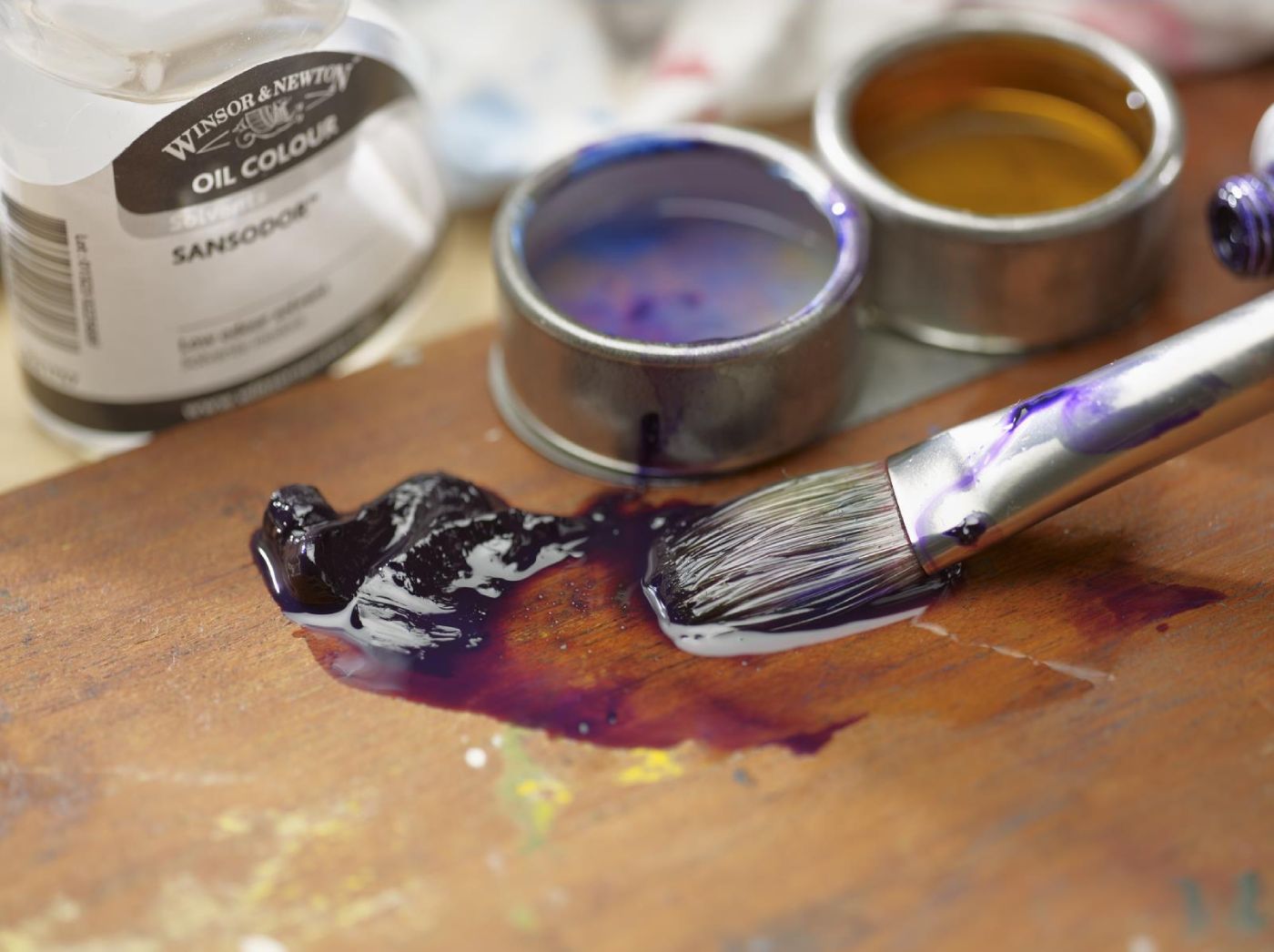
Some of these materials are thinners and solvents for oil painting.
Thinners are special additional materials that serve to reduce the viscosity of oil paint, to dilute varnishes, to clean brushes, palettes and other working tools used in oil painting.
Two types of thinners are commonly used for oil painting: white spirit and terpenes.
White spirit is hydrocarbons that are extracted from petroleum products. It is colorless, with the smell of kerosene, and has good dissolving power. The white spirit in art stores does not smell as strong and heavy as the white spirit from the building departments. Therefore, you should not buy it in hardware stores if you will use it in oil painting.
This thinner is most often used to dilute oil paints, to clean brushes, palettes, and palette knives. It is not used to dilute varnishes, as it has low dissolving power for these paints.
White spirit is recommended to be added in a small amount to oil paint, since in the process of drying the painting layer, dry areas may form, which is called oil paint scorching. Also, this thinner greatly thins the oil paint – this must also be borne in mind.
Terpenes are naturally occurring hydrocarbons. Terpenes include turpentine, pinene, and turpentine. These liquids are most often colorless with a pine needle odor.
Used for thinning oil paints and thinning varnishes.
Turpentine usually causes yellowing and subsequently darkening of the paint layer, pinene to a lesser extent, but still causes yellowing of the paint layer. Therefore, terpenes should also be added in reasonable amounts to the paint.
Another option: you can use linseed oil as a thinner for oil paints. Linseed oil is a binder in oil paints. If you write in linseed oil, then the work will dry longer, after drying the paint layer is shiny. But you need to know that this oil usually turns yellow after drying, so it is not recommended to use it for light and cold colors. Forms a hard, durable, elastic film, insoluble in organic solvents. It is better to use it for painting in a raw way.
To speed up the drying of the paint in the process of using linseed oil as a thinner, a thinner was developed with the addition of white spirit and a desiccant to linseed oil (this is one of the mediums (paint additives) used in oil painting to speed up the drying of paint).
We advise you to try them all in your painting to better understand their qualities. And already, based on your goals and ideas, choose one or another diluent for yourself. [1]
Can You Use Paint Thinner for Oil Painting?
A solvent is a liquid that dissolves some of the binders in the paint, giving it the desired consistency.
The thinner, on the other hand, dilutes the paint, reducing the viscosity of the material so that the paint can be used without problems.
It is also used to clean brushes, palettes and other painting tools from paint. But, since the thinners themselves are quite expensive, you can clean the brushes in cheaper ways. In other words, the usual thinner does change the consistency of the paint, its binding properties, but does not change its structure. After drying, the paint remains the same. The thinner simply helps spread the paint across the canvas.
The solvent (hence the name) dissolves the oily substances in the paint, due to which, after drying, the paint layer may differ from what you expected at first. [2]
What You’ll Need To Use Paint Thinner for Oil Paint
To start working with the thinner, you will need:
- Thinner container
- Brushes
- Paints on the palette
Pour a small amount of thinner into a special container and gently add it with a soft brush, mixing the thinner into the paint. It is worth noting that the thinner evaporates rather quickly, so you need to work with it more vigorously.
What Exactly Is Paint Thinner?
Paint thinner is a liquid solvent used to thin oil-based paints or clean up after painting. It can also be used to remove paint from brushes, turpentine from paint cans, and other substances from surfaces. Paint thinner is made of petroleum distillates and has a strong odor. It is flammable and should be used with caution.
Different artists use paint thinner to thin their oil paints so that they can achieve a more transparent look in their paintings. Thinners can also make it easier to apply paint to a surface evenly. If you want to avoid diluting your colors, make sure you use the right ratio of paint thinner to paint. Some artists also use paint thinner to clean their brushes after painting.
Safety Warnings for Paint Thinner

Paint thinner is a flammable substance, so it is important to take precautions when using it. Always use paint thinner in a well-ventilated area and avoid smoking or open flames. Paint thinner can also be damaging to your health if inhaled, so make sure to wear a dust mask or respirator when using it. In addition, paint thinner can damage some surfaces, so test it on an inconspicuous area before using it on your painting surface. [3]
How to Thin Oil Paint?
There are two ways to thin oil paint: adding a thinner or mixing the paint with a medium.
A thinner is a liquid that can be added to oil paint to thin it out, making it easier to work with. The most common type of thinner is turpentine, but there are also other options available, such as mineral spirits or white spirit. When using a thinner, it is important to be mindful of the ratio of thinner to paint so that your colors do not become too diluted.
Another way to thin oil paint is by mixing it with a medium. A medium is a substance that can be added to paint to change its properties, such as viscosity, drying time, or color. There are many different types of mediums available, so be sure to choose one that is compatible with your paint and your desired result. When using a medium to thin paint, it is again important to be mindful of the ratio so that you do not over-thin your paint. [4]
1 / Choose Your Thinner
Paint thinner is a very strong solvent, and there are many different types available on the market. Each type of thinner has its own strengths and weaknesses, so it’s important to choose the right one for your needs.
Some thinners are more aggressive than others, and can damage your paintbrush or painting surface if not used properly. Others are less aggressive and can be used safely on a variety of surfaces.
When choosing a paint thinner, always read the labels carefully to make sure you’re choosing the right product for your project.
2 / Determine the Appropriate Amount of Thinner
Once you’ve chosen your thinner, it’s time to determine how much you’ll need. This will vary depending on the type of thinner you’re using, the consistency of your paint, and the amount of paint you’re working with.
As a general rule, you should start by adding a small amount of thinner to your paint and then increase the amount as needed. It’s always better to add too little thinner than too much, as you can always add more if needed but you can’t take it away once it’s been added.
3 / Test the Mixture
Before adding thinner to your paint, it’s always a good idea to test the mixture on an inconspicuous area. This will help you determine if the ratio of thinner to paint is correct and will also give you a chance to see how the thinner affects the color of your paint.
How to Use Paint Thinner to Clean Brushes?
Not only can paint thinner be used to thin out paint, but it also works great for cleaning your brush afterwards. To clean your brush, dip it in the paint thinner and then wipe it on a rag or paper towel. This process may need to be repeated several times to remove all the paint from the brush.
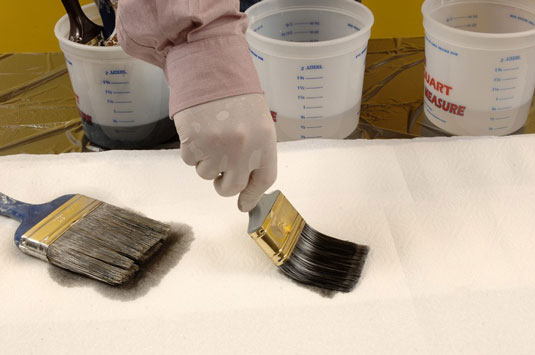
Once the brush is clean, rinse it well with water and then allow it to air dry.
1 / Prepare Three Containers
You will need three containers to clean your paintbrush: one with paint thinner, one with water, and one for waste.
Pour the paint thinner into the first container and the water into the second. You can use any type of container for these, but it’s helpful to have something that is deep enough to fully submerge the brush.
2 / Start Cleaning
Dip the paintbrush into the paint thinner and then wipe it clean on a rag or paper towel. Repeat this process until all the paint is gone from the brush.
In order to remove all the paint, you may have to repeatedly dip your brush into the paint thinner.
3 / Repeat
Once the paintbrush is clean, dip it into the water and then wipe it clean on a rag or paper towel.
Continue this process until the brush is free of paint thinner.
You may need to dip the brush into the water multiple times to remove all of the paint thinner.
4 / Separate the Thinner
Once the brush is clean, you will need to separate the paint thinner from the water. This can be done by pouring the contents of the container into a strainer or by using a coffee filter.
Pour the paint thinner into a new container and dispose of the water. Be sure to label the container so that you don’t accidentally use it again.
5 / Do a Final Rinse
Before using the paintbrush again, rinse it well with water. This will remove any residual paint thinner from the brush and will also help to restore its shape.
Allow the brush to air dry before using it again.
6 / Dispose and/or Store Paint Thinners Carefully
Paint thinners are flammable and should be stored in a cool, dry place away from heat or open flames.
Be sure to dispose of paint thinners properly. Contact your local waste management facility for information on how to do this. Do not pour paint thinners down the drain as this can contaminate the water supply.
FAQ
Can I use regular paint thinner for oil painting?
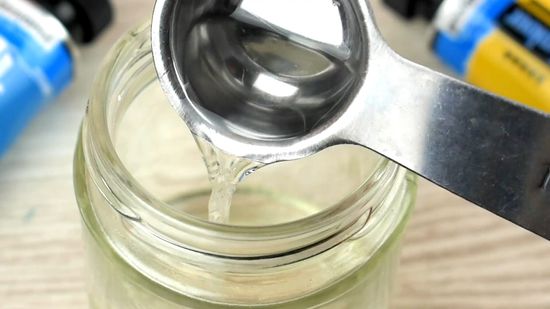
Yes, you can use regular paint thinner for oil painting. However, there are some things to keep in mind when using paint thinner for oil painting.
First, paint thinner is a highly flammable liquid. Make sure to keep it away from heat sources and open flames.
Second, paint thinner can be toxic if inhaled or ingested. Be sure to work in a well-ventilated area and wear a dust mask if needed.
Third, paint thinner will remove any existing paint from your brush. Be sure to clean your brush thoroughly after each use.
Fourth, paint thinner can damage some types of surfaces. Test on an inconspicuous area first before using paint thinner on your painting surface.
What kind of thinner do you use for oil painting?
A thinner is a liquid that is a kind of solvent for oil paints. Consists of turpentine, white spirit, pinene. They differ from each other in numbers (this is due to the composition). Thinners can not only dilute paints, but also clean and wash brushes after painting or wash palettes.
Oil is one of the oldest art paint thinners. After all, even in ancient times, oil paints were diluted with oil. Oil paints and the name took their name from oil, since the color pigment is simply ground with vegetable oil. Oil for oil paints comes from flax seeds, poppy seeds, hemp oil, walnut oil or sunflower oil.
Paint varnish is a resin diluted in a solvent. Varnish helps in painting, making the structure of the paint more dense: after drying, the paint holds tighter than after pure thinner or oil.
A two-component in oil painting is called a thinner, which consists of two components. Art varnish + oil, which are mixed in portions: ~ 1 part of varnish + 2-3 parts of vegetable oil.
A three-component thinner, as you probably guessed, is a two-component to which a third component has been added – this diluent. And its composition is as follows: artistic varnish + vegetable oil + thinner. Everything is mixed in different volumes. This is the classic, artistic three-component thinner. [5]
Can you oil paint with acetone?
Yes, you can oil paint with acetone. Acetone is a type of paint thinner that can be used to thin oil-based paints. However, it’s important to choose the right type of paint thinner for your project. For example, if you’re using oil-based paint, you’ll need to use an oil-based paint thinner.
What can I substitute for turpentine?
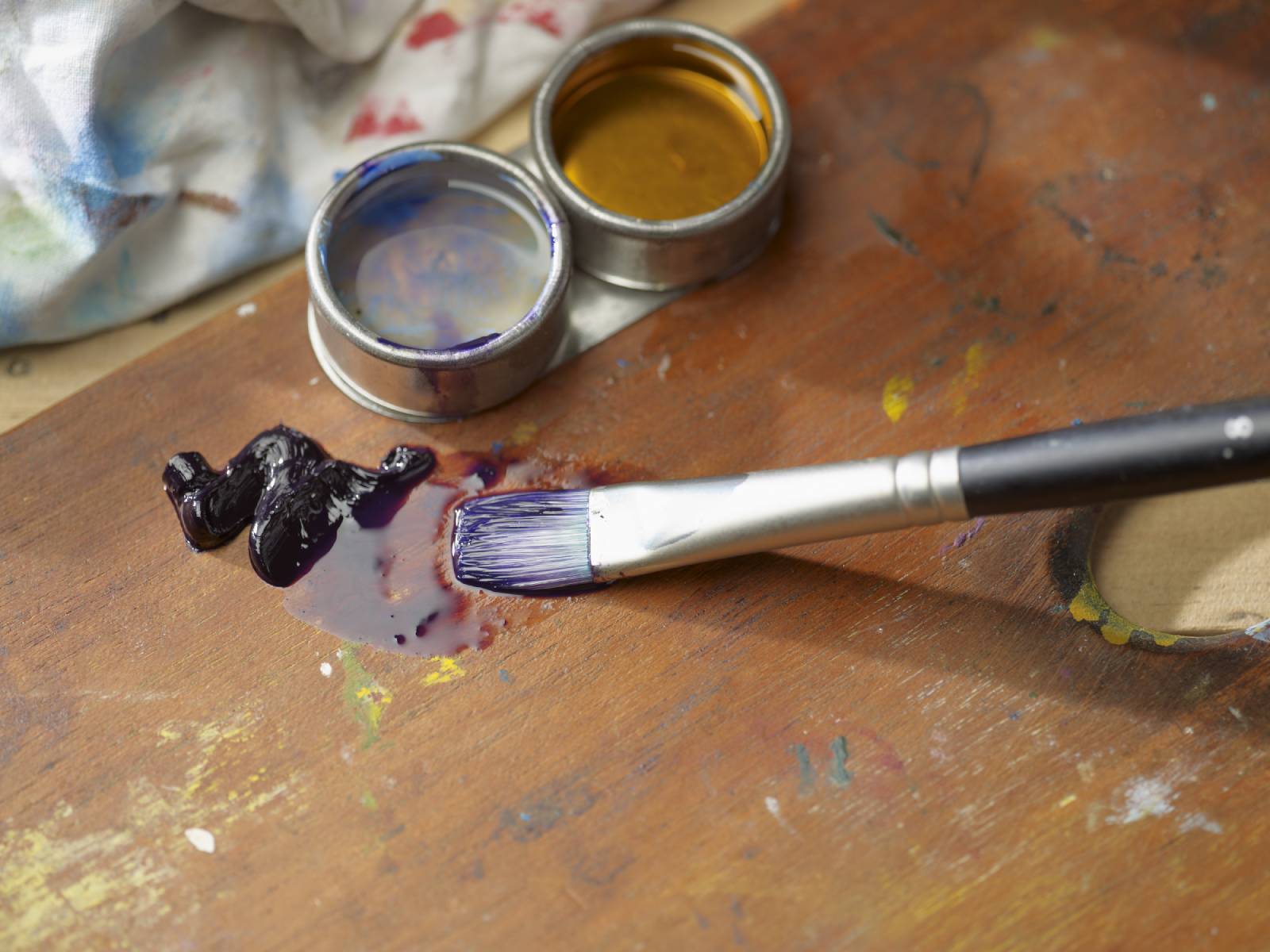
Stump turpentine, which is obtained by processing the stump of a coniferous tree.
Wood turpentine. It is obtained by special processing of branches and trunks of coniferous trees. Wood turpentine has an almost brown or yellowish color that disappears during processing.
Turpentine is a pure essential oil, which is obtained by distillation of resinous secretions from coniferous trees.
But if you could not find the solvents listed above and do not know how to replace the solvent for oil paints, then you can use ordinary white spirit. It will be very easy to find it in any building materials store.
What is a good substitute for mineral spirits?
Mineral spirits, also known as white spirits, are a petroleum-based solvent. They are widely used as an industrial cleaner and degreaser. In addition, mineral spirits are commonly used by painters as a paint thinner and brush cleaner.
While mineral spirits are very effective at what they do, they can also be quite harmful to your health. Inhaling the fumes from mineral spirits can cause headaches, dizziness, nausea, and even vomiting. In addition, prolonged exposure to the vapors can lead to more serious health problems such as liver and kidney damage.
Another option is to use a water-based paint thinner. Water-based paint thinners are made from distilled water and typically contain no harmful chemicals or fumes. They are an excellent choice for those who are looking for a safe and nontoxic option.
Finally, you could also try using olive oil as a paint thinner. Olive oil is a natural product that has been used for centuries in the Mediterranean region. It is safe to use and will not produce any harmful fumes.
Useful Video: PAINT TALK: Do You Need Medium or Paint Thinner?
Conclusion
For those who like to experiment, using paint thinner for oil painting can be a fun way to see what type of effect you can create. Be sure to use a small amount and test it on a scrap piece of canvas first before trying it on your masterpiece. Have you ever used paint thinner or another unusual substance in your paintings?
References
- https://finearttutorials.com/guide/thinning-oil-paint/
- https://www.truevalue.com/diy-projects/post/paint-and-stain/use-paint-thinner-properly
- https://www.solvchemcustompack.com/blog/paint-thinner-safety-tips/
- https://www.ehow.com/how_5154647_thin-oil-paint.html
- https://pugach-painting.com/en/choosing-an-oil-painting-thinner/



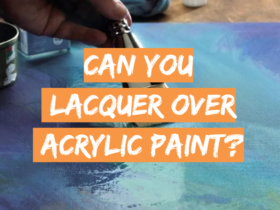






Leave a Review